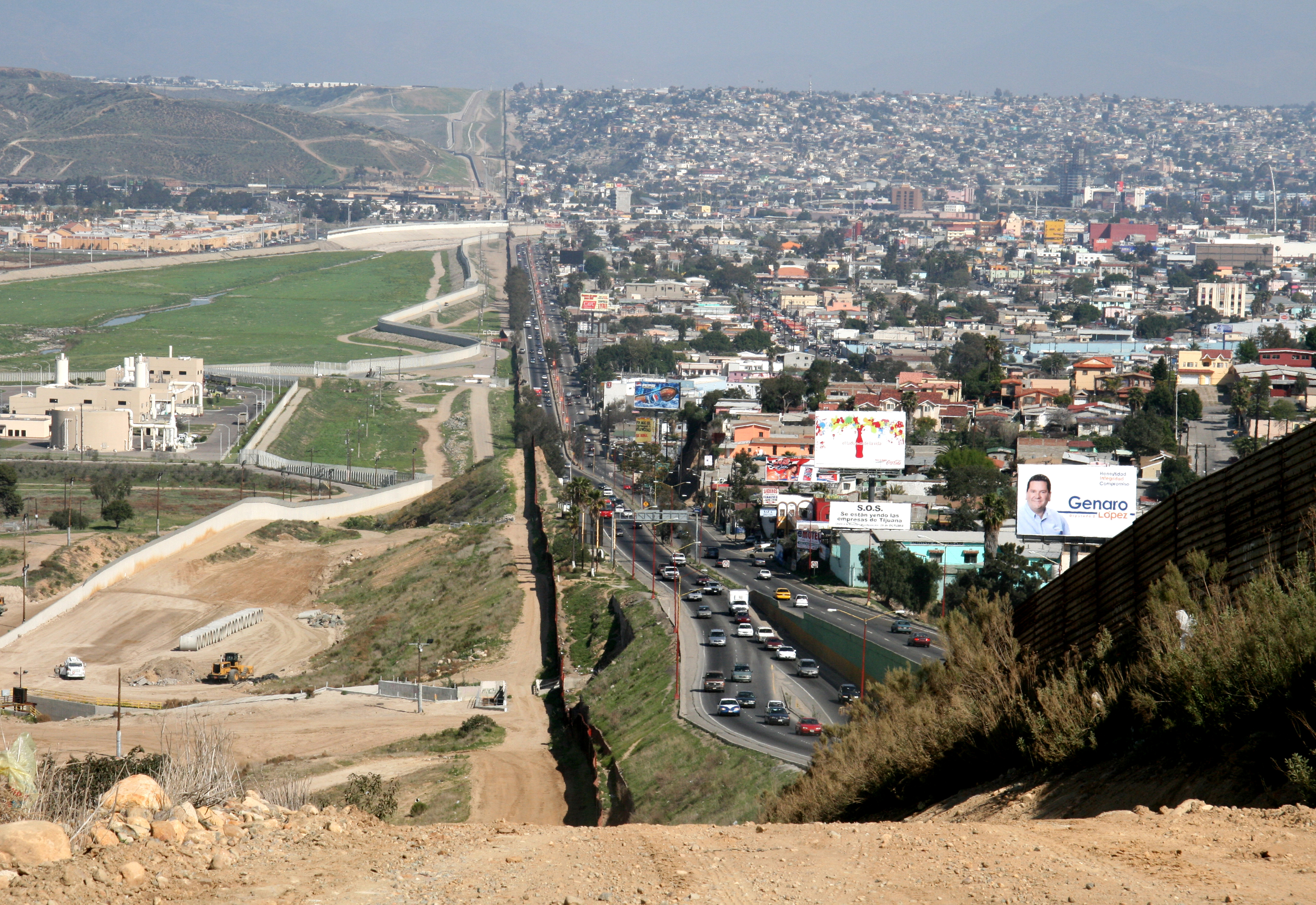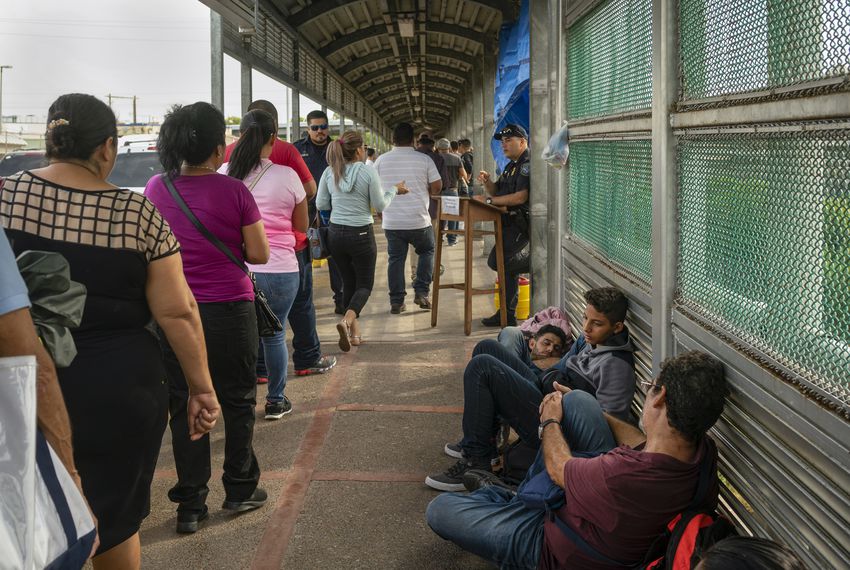
MCALLEN — Cases of severe dehydration and overexertion among migrants are skyrocketing in deep South Texas as people push their bodies past the breaking point to get into the United States, new statistics obtained by The Texas Tribune show.
According to figures compiled by the U.S. Border Patrol's Rio Grande Valley Sector, which has the most apprehensions on the U.S.-Mexico border, authorities have already encountered 64 migrants with a rare and dangerous condition known as rhabdomyolysis so far in the 2019 fiscal year. That's double last year's total — and there are still more than two months left in the period.
In all of 2018, there were 32 such cases; in the last half of fiscal 2017, the first period in which the sector began tracking rhabdomyolysis, there were just three cases, the stats show.
"It's only the beginning of July, and we're double what we were last year," Thomas Kimbriel, Border Patrol agent/intelligence, said in an interview last week. "There are several days where there's five in a single day, so you can see that arc."
Rio Grande Valley Sector Chief Rodolfo Karisch said agents in his sector, who spend about 60% of their time on humanitarian response duties — as opposed to border enforcement — are taking about 30 migrants per day to the emergency room. He has also set aside one of his Border Patrol stations — in Weslaco — as an infirmary where patients can be quarantined.
A Guatemalan teen with influenza died after being transferred to the facility in May.
Kimbriel said the migrants are developing rhabdomyolysis — which can also affect athletes when they push themselves too hard, too fast — from overexertion and dehydration that can break down their muscle tissue. That, in turn, causes the damaged muscle fibers to release myoglobin into the bloodstream, which clogs the kidneys and can cause renal failure.
The spike in diagnosed rhabdomyolysis cases in the Rio Grande Valley Sector comes against the backdrop of mounting criticism over the deaths of migrants who have been in U.S. custody and outrage over squalid conditions inside Customs and Border Protection migrant processing centers in Texas.
A government report released earlier this month, based on inspections of centers in South Texas in June, found them dangerously overcrowded and said the conditions "represent an immediate risk to the health and safety" of both the migrants and the agents guarding them.
What's also clear is that many migrants are already sick or injured when they cross the border — from severe dehydration, infections and other conditions — a point authorities are quick to make amid the withering criticism they have faced over the treatment of migrants in U.S. custody.
"There are a lot of people that are traveling to the United States that are already ill and infirm. Many times, we won't know about it — they're not showing any signs of it," Karisch said at a press conference earlier this month. "We are seeing every infirmity that you can name, from mumps to [tuberculosis], scabies. You name it, our agents are seeing it."
The Border Patrol says migrants are getting screenings before, during and after they are detained at the processing centers. But lawyers who have visited the centers say the agency is not living up to a court-ordered mandate to care for sick migrants it detains; after at least one of those visits, authorities sent four kids to the hospital.
One nurse who works in a Rio Grande Valley hospital said that while many of the hospital's migrant patients indeed were sick before they crossed the border, they tended to get worse in U.S. custody — detained with other sick migrants in often unsanitary conditions for days on end.
"They're arriving here sick, and they get sicker," said the nurse, who spoke on condition of anonymity for fear of losing her job. The nurse said young migrants going through the intake process had conditions that included diaper rash so bad that babies were bleeding, explosive diarrhea that oozes out of days-old diapers, chicken pox, antibiotic-resistant infections, multiple viral infections and at least one hungry baby who guzzled four bottles of formula.
"There are some patients that I see coming in and I'm like, how did you not know that they're having difficulty breathing or having so much congestion and mucus that they're choking on their own — everything?" said the nurse. "It's kind of a mess."
At least seven migrant children have died after being taken into U.S. custody since September, sparking outrage in Congress and prompting border authorities to dramatically increase the number of medical providers at its facilities.
Other migrants die on the way here — often after grueling journeys in the backs of 18-wheelers, long stays in overcrowded stash houses in Mexico, or punishing walks through hot and arid stretches of the U.S.-Mexico border.
Twelve migrants died in the last week of June alone in the Rio Grande Valley Sector, officials said. The deaths included the Salvadoran father and daughter, Oscar and Valeria, whose drowning in the Rio Grande near Brownsville stirred sorrow and outrage around the globe after a photo of their bodies was published.
On the same day, about an hour to the west, local authorities said they recovered the bodies of four migrants, including three small children. Authorities said they suspected the migrants died of heat exhaustion and dehydration.
"At least every other day, we're recovering bodies," said Elizabeth Gamez, supervisory Border Patrol agent/intelligence, who has been tracking the rise in rhabdomyolysis cases.
Although some migrants ultimately die after developing the condition, the Rio Grande Valley Sector is only testing for the condition in people who are alive — meaning the figures they've compiled likely understate its prevalence because they don't include people who might have died from it.
The Tribune asked about rhabdomyolysis cases in the other four sectors along the Texas-Mexico border. The Del Rio Sector responded that it did not track that data; the Tribune has not yet heard back from the others.
A rhabdomyolysis case in the remote Big Bend Sector grabbed headlines earlier this year when a woman stopped to help a migrant suffering from the condition, only to be arrested and face the possibility of criminal charges for "harboring" undocumented immigrants.
Gamez put the blame on profit-seeking smugglers for pushing migrants so hard that their muscles break down and damage their kidneys.
"They'll either come out diabetic or even worse conditions, or some just pass away at the hospital," she said. "They're chasing this dream thinking they're going to make it and everything is going to be OK, and they're paying thousands of dollars already and they're not being treated like humans. They're being treated like cargo."







